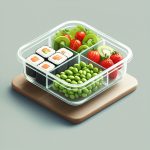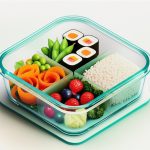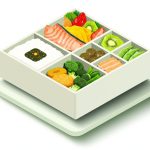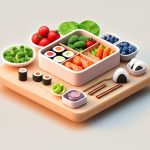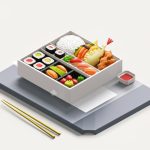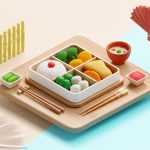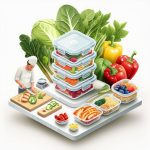Crab rangoon—those crispy, creamy wontons filled with savory goodness—are a popular appetizer. But are they a nutritional minefield? This article delves into the nutritional facts of crab rangoon, exploring its ingredients, macronutrients, micronutrients, and health implications. We’ll compare restaurant, frozen, and homemade versions, offer tips for healthier choices, and discuss the ongoing research surrounding this popular dish.
Decoding the Deliciousness: What’s Inside Crab Rangoon?
Crab rangoon’s appeal lies in its contrasting textures and flavors—the crispy fried wonton wrapper and the rich, creamy filling. This filling typically consists of cream cheese, imitation crab meat (often made from pollock), and seasonings. These ingredients already suggest a potential calorie and fat load, further compounded by the deep-frying process.
Unwrapping the Nutritional Puzzle: Calories, Macros, and More
Navigating crab rangoon’s nutritional information can be tricky. Serving sizes vary wildly, making comparisons difficult. Restaurant recipes differ, leading to further inconsistencies. However, we can paint a general picture.
A single, average-sized crab rangoon contains approximately 66 calories. Sounds manageable, right? But who stops at one? Three larger rangoons can quickly reach 240 calories, comparable to a small hamburger.
Macronutrient Breakdown
Fat is the dominant macronutrient in crab rangoon, often exceeding 50% of the total calories. Carbohydrates, from the wrapper and any added sugar, come next. Protein, mostly from the imitation crab, contributes the least.
| Nutrient | Per Rangoon (approx.) | Per 100g (approx.) |
|---|---|---|
| Calories | 66 | 287-303 |
| Fat | 4.2g | 14-17g |
| Carbohydrates | 4.8g | 28-36g |
| Protein | 2.1g | 9-10g |
These are estimates. Actual values vary considerably.
This macronutrient profile suggests that crab rangoon is likely best enjoyed as an occasional treat rather than a regular snack.
Real Crab vs. Imitation Crab
Most crab rangoon uses imitation crab. While real crab generally has more protein and fewer additives, the difference may not significantly impact the overall nutritional profile of the dish given the other ingredients.
Restaurant vs. Frozen vs. Homemade
| Nutritional Information (per 100g) | Restaurant (Estimated) | Frozen (Brand Varies) | Homemade (Varies considerably based on recipe) |
|---|---|---|---|
| Calories | 287-303 | 271-303 | 200-400 |
| Carbohydrates | 28-36g | 28-36g | 20-45g |
| Fat | 14-17g | 14g | 10-25g |
| Protein | 9-10g | 9-10g | 7-15g |
Restaurant versions tend to be the most calorie-dense due to deep frying and generous fillings. Frozen options offer more consistency, but still vary by brand. Homemade crab rangoon gives you the most control over ingredients and cooking methods, allowing for healthier modifications.
Micronutrients and Health Implications
While crab rangoon provides small amounts of calcium, iron, and vitamin A, it isn’t a significant source of micronutrients. A more pertinent concern is its sodium content, which can be high, potentially affecting blood pressure. The saturated fat and cholesterol content are also noteworthy, especially for those managing heart health.
| Nutrient | Amount per Serving (Estimate) | % Daily Value (Estimate) |
|---|---|---|
| Calcium | ~60mg | ~6% |
| Iron | ~2mg | ~11% |
| Vitamin A | ~470 IU | ~10% |
| Sodium | ~500mg | ~22% |
These are estimates. Actual values can vary.
Tips for Healthier Choices
- Portion Control: Limit yourself to one or two pieces.
- Baking or Air-Frying: These methods significantly reduce fat and calories compared to deep-frying.
- Homemade Rangoon: Control ingredients, using reduced-fat cream cheese, whole-wheat wrappers, and fresh crab.
- Balance Your Meal: Pair crab rangoon with lighter, vegetable-rich dishes.
Ongoing Research and Uncertainties
Nutritional science is ever-evolving. While this article provides a current understanding of crab rangoon nutrition, ongoing research on dietary fat, cholesterol, and optimal macronutrient ratios may lead to refined recommendations in the future. It’s advisable to stay informed about evolving nutritional guidelines.
Conclusion
Crab rangoon can be enjoyed as part of a balanced diet. Understanding its nutritional profile empowers you to make informed choices, whether by practicing portion control, opting for healthier preparation methods, or balancing it with nutrient-rich options. While more research is needed to fully understand its long-term health impacts, moderation and mindful consumption remain key to enjoying this popular appetizer.
- Glass Bento Containers Make Packing Lunch Easier and Healthier - December 19, 2025
- How Glass Bento Box Containers Make Meal Prep Easier - December 18, 2025
- Why Glass Boxes for Lunch Are Trending for Meal Prep - December 17, 2025

